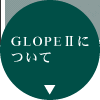予定表 -詳細情報-
| 件名 | LS 堀江哲也氏 |
| 開始日時 | 2011年 11月 29日 (火曜日) 12時15分 (GMT+09:00) |
| 終了日時 | 2011年 11月 29日 (火曜日) 12時50分 (GMT+09:00) |
| 場所 | 1号館401教室 |
| 詳細 | GLOPE II ランチタイムセミナー 【報告者】堀江哲也氏(上智大学・環境と貿易研究センター) 【タイトル】Optimal Detection Strategies for an Established Invasive Pest 【概要】 We model optimal detection of sub-populations of invasive species that establish ahead of an advancing front. For many invaders, eradication of the main population is an untenable goal, yet it may be possible to treat and eradicate emerging sub-populations once these sub-populations are detected. We embed a dynamically optimal post-detection management plan of sub-populations into a model of optimal detection effort determination and find that optimal detection effort depends, in part, on the distance from the main front: locations closer to the front with shorter management horizons enjoy lower reductions in overall cost from intervention. The uninfested landscape is divided into two zones, characterized by different dynamically optimal management plans: a suppression zone and an eradication zone. In the suppression zone, optimal detection effort increases with distance from the front. At the distance where the suppression zone yields to the eradication zone, optimal detection effort plateaus at its maximum level. *The talk will be given in English. *当初予定の11月22日から日程が変更となりました。 |
| カテゴリー | 政治経済学基礎セミナー・ランチタイムセミナー |








